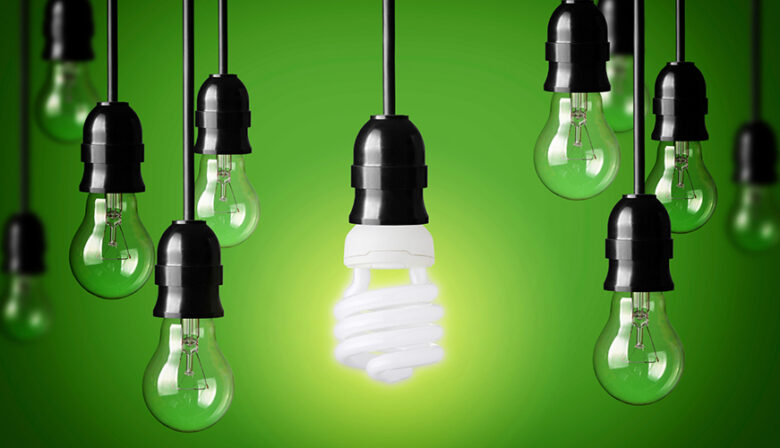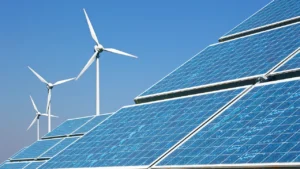The relationship we have with technology is at a pivotal point. As millions of devices run our everyday lives, the use of energy by our devices has turned into an important environmental issue. Every household has hundreds of electronic devices simultaneously, which leaves an invisible yet significant carbon footprint that goes beyond our own awareness. Low-energy technology is a revolutionary approach to the problem and offers innovative solutions that can reduce energy consumption but without compromising performance or functionality. These devices that are energy efficient demonstrate that environmental responsibilities and technological advances can coexist, resulting in an environmentally sustainable future for our ever-changing digital world. By embracing and understanding technology that is low-energy, people can make educated choices that benefit their wallets and the environment while still enjoying the lifestyle they’ve come to anticipate.
Understanding Low-Energy Tech
Low-energy technology covers a wide array of products and systems that are designed to reduce the power usage through creative engineering and clever design principles. These devices operate on fundamentally different methods in comparison to conventional electronics, using advanced components, powerful processors, and intelligent energy management techniques that drastically reduce the energy consumption. The fundamental idea is optimizing all aspects of device operations, beginning with starting the boot process through to standby modes, making sure that power consumption is only when it is needed and at the highest efficiency levels that are possible. Modern low-energy devices have sophisticated algorithms that continually examine the patterns of usage and alter power consumption in line with and based on user behavior to maximize performance while minimizing consumption. Contrary to traditional devices that typically consume energy at a maximum regardless of what is needed Low-energy technology adjusts its power consumption according to the current demands of users, resulting in an improved and more efficient user experience.
Benefits of Using Low-Energy Gadgets
The use of low-energy devices provides immediate and lasting advantages that go beyond cost savings alone and create value across multiple aspects of everyday life. Benefits to the financial system are apparent in one billing cycle because a lower energy usage translates directly into lower electric bills, and some households report savings of 30 to 50 percent on their energy-related electronics expenses. They typically have longer battery life as well as a reduced charging time, which reduces the hassle of continuous energy management while also prolonging the life that rechargeable batteries have. The performance benefits often surprise people who use low-energy technology, since it generally performs better than other alternatives, offering faster start-up times, lower temperature generation, and enhanced reliability because of less pressure on the components. The majority of low-energy gadgets run more quietly than conventional counterparts, resulting in a more peaceful environment and using less energy.
Examples of Low-Energy Tech
Technology that is low energy includes different types of products, each offering inventive approaches to maximizing power efficiency across various applications. Intelligent LED light systems are one of the most readily accessible options, using around 80 percent less energy than conventional incandescent bulbs and incorporating programmable features, adjustments to color, and remote control options that increase capabilities. Appliances that are energy efficient, such as ENERGY STAR certified refrigerators, washing machines, and dishwashers, use advanced insulation, variable speed motors, and smart sensors that reduce energy consumption by 20-50% when compared with traditional models. Computing devices that consume less power, like ultrabooks and tablets that have ARM processors, provide full computing capabilities while using only a tiny fraction of the power needed by traditional desktop computers and laptops.
How to Choose Low-Energy Gadgets
In order to select the right low-energy gadgets, it is necessary to take careful consideration of a variety of aspects that impact efficiency and performance, making sure that the chosen gadgets meet certain requirements while also providing the greatest environmental benefits. Energy efficiency ratings are the main criteria for selection, and certifications like ENERGY STAR, EPEAT, and Blue Angel provide standardized benchmarks to compare devices from different brands and product categories. Specifications on power consumption, generally expressed in watts or kilowatt hours, provide concrete information to compare operational expenses and environmental impact; however, these figures should be evaluated in relation to the actual usage patterns and capabilities. Analysis of features is crucial for low-energy devices, as they are efficient by removing useful functions, while others boost performance through clever design and modern technology.
Impact on the Planet
The environmental impacts of widespread low-energy technology adoption go beyond the individual energy consumption of devices and create ripple effects that improve global ecosystems and the stability of the climate. A lower demand for electricity due to the millions of energy-efficient devices reduces the strain on power generators, especially natural gas and coal plants that generate substantial CO₂ emissions and pollution to the air. Manufacturing industries benefit from a lower demand for essential raw materials for power generation infrastructure because less energy consumption demands eliminate the need for new power plants and transmission systems. The use of water for power generation reduces significantly because thermal power plants need huge amounts of water to run their cooling systems. The reduction in consumption of electricity directly affects water conservation.
Challenges and Solutions
Transitioning to low-energy technology has numerous challenges that require creative strategies and innovative solutions in order to overcome obstacles to wide acceptance. Prices that are higher at the beginning of purchases often dissuade consumers from purchasing, despite longer-term savings, which requires financing options, rebate programs, and a more precise cost-benefit analysis that can enable buyers to understand the total costs of the ownership. Performance perception issues are a result of consumers believing that devices with low energy have less functionality, requiring education programs and demonstrations to demonstrate the power of modern-day technological advancements.
The Future of Low-Energy Tech
The path of low-energy technology advancements suggests revolutionary advancements that will fundamentally alter the way people interact with electronics and control consumption of energy. Technologies like quantum computing as well as advanced battery chemistry and processors that are ultra-efficient promise to offer unprecedented performance with a minimal amount of power. Artificial intelligence integration will allow devices to adapt and learn the user’s needs more effectively and optimize energy use in real time using predictive algorithms and machine-learning capabilities. Technology for wireless transmission of power can reduce the requirement for traditional charging techniques, allowing devices to run continuously, taking power from the surrounding environment or central transmission systems. Nanotechnology in component design will result in smaller and more efficient devices that require fewer material resources while offering greater functionality.
FAQs
1. How much is typical energy savings by switching to energy-efficient gadgets?
The majority of households will lower their energy use for electronics by 30-50% after switching to lower-energy options. Some devices can offer more savings based on the usage patterns of users and the old age of equipment that has been replaced.
2. What is the time it usually takes to recuperate the initially higher cost of devices that consume less energy?
The duration of payback is dependent on the type of device and its use, but the majority of low-energy devices will pay off in 2 to 4 years, thanks to reduced power bills, with certain high-usage devices earning returns in 12-18 months.
3. Do low-energy devices function just as well as traditional devices?
Modern low-energy devices usually beat traditional devices, offering more features, higher reliability, and an improved user experience while using considerably less energy.
4. Do you know of any government incentives for buying low-energy devices?
Numerous governments provide rebates, tax credits, and incentives for appliances and gadgets, but the amount of incentives offered varies depending on the location and type of device.




